Canelo vs Chavez Jr.: A Question of Value
“Nobody knows what a dollar is, what the word means, what holds the thing up, what it stands in for. And that’s also what my work is about. Look at these things, I try to say. They’re beautiful. But what the hell are they? What do they do? How do they do it?” — J. S. G. Boggs
J. S. G. Boggs made a living as an artist by carving a unique niche for his talents. He made art that closely resembled currency, and then convinced people to assign it the same value as real currency. The trick didn’t always work; nine out of ten waitresses on whom he tried to dump his creations (which came to be known as Boggs bills) turned him down and asked him to cough up real dollars instead of drawings.
Still, enough people went along with the idea that, through a chain-reaction of interactions and dealings between “real world” people and “art world” people, Boggs’ work transformed into performance art, turning his name into a valued commodity in certain circles. As polarizing as it could be insightful, some rank Boggs’ work barely one step above the hustles of a con man. But many more see him as a mix of artist and philosopher, his drawings and their real-world impact raising questions about the very meaning of value, and how society seems to assign it almost arbitrarily.
And in no other sport is the issue of value as murky as it is in boxing. All other major professional sports try to incorporate as much predictability as possible. Instant replays, myriad HD cameras, and electronic sensors introduce a measure of certainty that the final outcome of a match will closely mirror what actually transpired. Off the field, there are rules dictating who will compete against whom, which players are allowed to be traded between teams, and there are sanctions in case the rules are not followed. The result is a neatly packaged product with teams and leagues run the same way as competent corporations, allowing managers to focus on putting together the best team they can afford. All this – in a general, overly-simplified sense – serves the purpose of finding who’s the best at playing something.
Boxing doesn’t ignore those conventions as much as it kicks them in the nuts, replacing them with a Wild-West-get-yours-while-you-can spirit that sometimes results in comedy, a few times in tragedy, or more often both at the same time. The Queensberry Rules which govern the happenings in the ring remain pretty much unchanged since they were first introduced over 150 years ago. Some technological addendums that could beef them up have been discussed over time, such as instant replay, only to be dropped with a collective wringing of hands. The athletic commissions, promoters, managers and sanctioning bodies are perennially locked in a Mexican standoff of mediocrity that all but guarantees the status quo prevails. Meanwhile, another well-meaning innovation –Compubox stats — often blurs the outcome of a fight more than it helps clarify it, since the numbers it produces are even less reliable than the judges sitting ringside.
This makes it difficult for old and new fans alike to assign value with any certainty to what they see in a boxing ring. A telling sign is that, when boxing fans watch a fight alongside newcomers to the sport, the only appropriate response to some of the latter’s questions is a cringe: “How do I know who’s winning?” “Why are there so many champions, again?” “If they’re in the same division, how come one of them weighs so much more than the other?” Those questions are intertwined to such a degree it’s hard to answer one without digressing into another one. The matter becomes more complicated if there is more than one “expert” in the room: boxing fans agreeing on any one thing is a rare occurrence; agreeing on three things at once is a small miracle. Even if a consensus is reached, all it takes for the argument to be blown to smithereens is a well-timed hook by the underdog. To paraphrase William Goldman, in boxing nobody knows anything.
Even among boxing’s cognoscenti, the fairness of a fight’s outcome or the true abilities of a boxer can be discussed endlessly, with the only consensus being that there isn’t one and there never will be. That is because judges score fights subjectively, rules are monitored imperfectly, enforced inconsistently, and flouted at every chance. Ring sizes vary from fight to fight; ringside clocks malfunction; judges’ tallies don’t add up; referees blow calls with no consequences. Fighters are matched way too tough or way too soft; some are fighting past their prime, away from their optimum weight, or both. Sanctioning bodies rely either on dart-throwing monkeys or sheer greed to determine who gets a title shot. Finding the true worth of a fighter becomes a herculean task under such an environment: no one knows what really happened yesterday, what is going to happen tomorrow, or where anyone truly stands today in this crazed game of musical chairs.
And then there are the boxing promoters, the charming snake oil salesmen who keep the good stuff at the bottom of their trunk for so long that they forget it’s even there, all the while unloading the cheap stuff and talking it up as if it were the real thing. And when they finally get to the quality stuff, they see that it’s now turned to useless, fetid gunk, so they sell it to you at a hefty markup. “It’s vintage stuff, you see? Top of the line!” As long as customers keep lining up, the salesmen will keep pouring it out. And yes, the snake oil faithful know they’re getting snake oil either way, but that’s beside the point. The point is, if you’re buying a placebo, you at least want it to taste good.
***
“[The] work of art …must have some kind of value, surely, because drawing it took a lot of time and skill. [He] arbitrarily assigns to his bill the dollar value that he has drawn on it, and leaves it up to his befuddled victim whether to accept the bill or demand “real” payment…” — From The Money Artist
And who would deny professional boxing is a placebo for sport? It looks like sport, it smells like sport, it even tries to behave like sport, but it is not sport. It is sanctioned combat dressed up as sport and consumed as entertainment, with the hype ramped-up to maximize mass appeal. But the survival of boxing-as-sport would not have endured thus far were it not for the fact fans believe that every boxing fight is linked to other fights that happened, or will happen, in order to find a champion, the guy who stands above everyone else, the baddest man on the planet. From the violence enacted in the ring and the entropy effected on the fighters’ features, hierarchy and unanimity will emerge. Boxing, we tell ourselves, distills life to its bare components and reassembles them into an epic written in blood. And it’s all ours to enjoy on Pay-Per-View for the low, low price of $64.99.
You’d expect crowds to be lining down the streets for that, but the reality is boxing’s audience keeps shrinking in North America with every passing year. There are as many potential culprits as there are WBA titles in a given division, but the simplest explanation is that the world left boxing behind as much as boxing failed to evolve. Since its last heyday in the 1980’s, the sport of boxing has become much less accessible, its structure significantly more inscrutable, and its pageantry hopelessly outdated. It’s too violent to qualify as wholesome family fare and its participants are too easily identifiable as minorities or foreigners to pass as mainstream poster boys or role models.
All that said, yes, big fights still occur in boxing, and some of them do very well indeed at the box-office, thank you very much. But the point remains that, while boxing continues to enjoy an audience this side of the Atlantic, it’s the size of that audience that causes concern. The more that audience dwindles away, the harder it is to put on quality fights, as championship-caliber fighters — increasingly aware of the dangers of partaking in this most brutal of sports — demand ever-increasing premiums for taking on other top talents. This results in showcases and mismatches populating the calendar at the same time top-fighter vs top-fighter matches become rarer.
Were J. S. G. Boggs around today, it would have made for the perfect meta-marketing ruse if promoter Oscar De La Hoya asked him to design the poster for this year’s Cinco de Mayo extravaganza. While all boxing blockbusters exploit fans’ delusions to some degree, the proof being so many so-called “superfights” fail to give fans much bang for their buck, there’s something deliciously perverse in the way Canelo Alvarez vs Julio Cesar Chavez Jr. was put together. It’s a match that tugs, in a very real way, at our blood-soaked heartstrings, while at the same time crushing our sense of logic, and it’s likely to either fall flat on its face or deliver a memorable evening, with not much grey area in between. Neither scenario can be counted out for sure, and that’s what makes the proposal of this all-Mexican main event so fascinating and, at the same time, so frustrating.
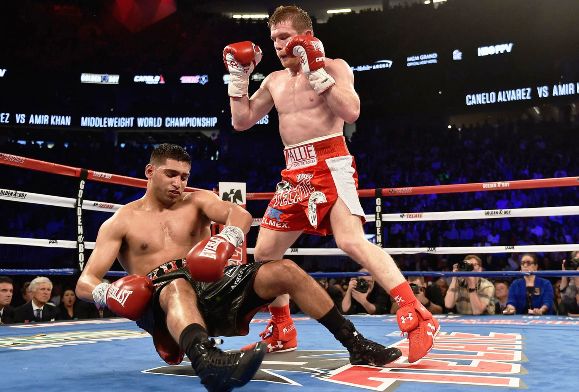
The frustrating part is not that Canelo vs Chavez Jr. is an inherent mismatch, although casino odds do favor the redhead, but more that absolutely nothing about this match makes sense. Chiefly, it makes no sense for Canelo Alvarez – arguably the biggest draw in North American boxing and a skilled, strong fighter in his own right – to avoid the middleweight division and Gennady Golovkin as if he were a nerd avoiding a bully at lunchtime. This makes even less sense when considering that, up until recently, the redhead was willing to trade leather with pretty much anyone that wanted to get some.
It also makes little sense that, to get the fight with Chavez Jr., a fight no one asked to see in 2017, Canelo jumped from junior middleweight to super middleweight, as he had to give a realistic target for Julio to hit on the scales. The move guarantees maximum comfort for Canelo, who regularly climbs into the ring as a light heavyweight, while ensuring the larger Chavez Jr. will suffer greatly to make weight. Thus, if Canelo earns a workman-like victory over a drained opponent who has seen better days — days which were never much to get excited about in the first place — this fight’s relevance will be on par with last year’s Cinco de Mayo pay-per-view, in which the Aztec redhead disposed of Amir Khan with a one-punch knockout blow that was as spectacular as it was predictable.
But on the other hand ….
What Canelo vs Chavez Jr. lacks in logos, it more than makes up for in pathos. Featuring two of the most recognizable names in boxing, both hailing from boxing-crazed Mexico, with contrasting personalities and backgrounds, and wildly different approaches to the fight game, Canelo vs Chavez Jr. feels like a high-stakes match, even as reality suggests otherwise. Suspend disbelief for a second, and you’ll start second-guessing this fight in no time. If there’s any merit to De La Hoya’s matchmaking here it’s that he has turned Canelo vs Chavez Jr., an unexpected and entirely bizarre match-up, into an impulse move on par with drunk-texting your ex, or drunk-going to the strip club, or drunk-doing-anything-you-don’t-normally-do-unless-drunk.
That doesn’t necessarily mean Canelo vs Chavez Jr. is an upset waiting to happen, or even a potential Fight of the Year candidate, but it doesn’t have to be any of that to be worthy of your attention or your dollars. Canelo has a large enough following to make any fight feel like an event. He’s also heavy-handed enough to command the allegiance of the blood-thirsty, and he’s good enough that even purists can’t turn their noses up at him.
On the other hand, while many see Chavez Jr. as little more than a punchline with a pulse, he can throw a mean hook to the body, one proven especially effective against smaller-sized foes. And rumours are “Son of the Legend” is even listening to what no-nonsense guru Nacho Beristain is telling him to do in training camp. Still not impressed? Turn your attention to the style matchup and you’ll find the plot thickens: both fighter’s feet are even heavier than their hands, both rely on powerful combination punching, both have inside games that are gutsy and hurtful, and they both tend to gas out in the mid-to-late rounds. Does this spell war-of-attrition or what?
That being said, don’t tune in this weekend expecting a remake of Olivares vs Castillo or Morales vs Barrera; neither Canelo nor Chavez Jr. — but especially Chavez Jr. — are on the level of those Mexican greats. But if all you want is to feel that familiar rush of violence-induced dopamine, chances are good this Saturday’s main event will deliver. After all, when was the last time Canelo faced a bigger foe with decent power? When was the last time Chavez Jr. took a fight as seriously as he’s taking this one? When was the last time bad blood between Mexicans disappointed in the ring? If you pick up Canelo vs Chavez Jr. and hold it up to the light just so, it gives off a radiance that hides many of its imperfections. While there are some dull ends that can’t be ignored, there’s also a definite shine to this matchup that can’t be denied. The real question is: how valuable does that make it to you?
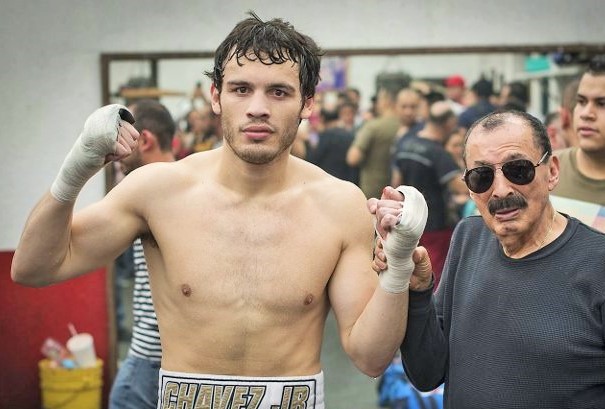
If you’re having trouble making up your mind, you’re not the only one. Mainly because it’s a hard task to spot all the genuine animosity between the two Mexicans, buried as it is beneath heaps and heaps of painstakingly-produced marketing content. And while Canelo and Chavez Jr. are indeed involved in a rivalry that dates back years, the antipathy is more one-sided than we’ve been led to believe.
For starters, Canelo resents, even after all this time, how Chavez Jr. overlooked him as a potential rival around five years ago, when a single weight class separated them. Moreover, during face-offs at Spanish-speaking networks, of which there have been more than a few, Jr.’s go-to taunt of Canelo is to mumble something about Golovkin in his trademark Sinaloan drawl; the Mexican redhead then retorts with a proper dress down, delivered in an authoritative staccato as he contrasts his own hard work and sense of sacrifice with Chavez Jr.’s lack of discipline and focus. The final blow is when he ridicules the Son of the Legend for squandering the huge opportunities available to him because of his last name. If it makes for riveting television — which it does — it also makes very clear who’s most eager of the two to punch the other in the face.
Their origin stories as boxers also shed light on the rivalry: Canelo became a professional boxer at age 15 when following a second-place showing at the Olimpiada Nacional, the Jalisco state government denied him a scholarship of 4,000 pesos (less than $300). On the other hand, Chavez Jr. got started in the racket with the full backing — and connections — of the greatest living Mexican champion. While Alvarez earned a measly 800 pesos for his professional debut, Chavez Jr. enjoyed royal treatment: TV coverage for his first go-around along with a cool $25,000. Add it all up and it’s no wonder that in the lead-up to Saturday night the usually banal Canelo has relished every opportunity to remind us he’ll make “four or five” times what Chavez Jr. will.
Does any of that guarantee we’ll get some ring drama this weekend? Maybe not, but if you’re a sensible fight fan, you either appreciate and embrace this Boggs bill of a fight for what it is, or you’ve already called BS on it and moved on. However, if Canelo vs Chavez Jr. produces a few memorable moments, or even a thrilling fight, would we still hold against it the fact it has little to no relevance to title pictures or pound-for-pound lists? It’s a question worth asking, because this weekend lots of eyes that don’t normally pay attention to boxing will be tuning in to see what’s going on down here, and what they see, or fail to see, will go a long way towards determining whether they bother checking out whatever fight blinks on their radar next. Say what you will about Canelo vs Chavez Jr. as a match-up, if it gains new adherents to the sport, we’d be wrong to root against it. Hardcore fans might deride the match-up, and think the participants unworthy of all the attention bestowed upon them. But that’s because it’s hard for them to admit that if Canelo vs Chavez Jr. is an aberration, it’s not because it doesn’t represent the sport we love at its best, but because it has the potential to represent it so well.
To understand why, consider Boggs bills didn’t hold value of the same kind currency does, and yet their creator infused them with said value the moment he convinced someone to accept them as payment. Similarly, Canelo vs Chavez Jr. does not hold value of the kind a genuine best-vs-best fight does. It won’t help bring order and hierarchy to the boxing landscape; it won’t tell us who’s the best boxer in a division, or even who’s the best fighter between the Mexicans. While Canelo is young and will be fighting at a comfortable weight, Chavez Jr. is most likely past his prime and could very well show up emaciated at Friday’s weigh-in. It doesn’t sound like a fair fight to me, either.
Here’s the catch, though: if Saturday’s main event looks like Canelo’s latest attempt to carry on Floyd Mayweather’s tradition of bad Cinco de Mayo matchups, it’s hard to remember one such event that had more potential to redeem itself. Which is to say, if Canelo and Chavez Jr. star in a give-and-take battle, putting on a great show that convinces casual fans that Boxing Is Great Again, then the Mexicans will have, against all odds, infused this doodle of a fight with real value. To put this in perspective, remember we’ve witnessed in the last few months a string of high-stakes, competitive fights that have bolstered the case that boxing has finally got over the #MayPac debacle of 2015. And while several of those fights were genuine best vs. best confrontations — Sergey Kovalev vs. Andre Ward, Gennady Golovkin vs. Danny Jacobs, and Vasyl Lomachenko vs. Nicholas Walters — they also failed to ignite widespread interest in boxing, doing little to boost its reach beyond the sport’s loyal fanbase.
Thankfully, that trend was broken last weekend when a momentous heavyweight bout shattered records and successfully crossed over into the mainstream. While most of the attention garnered on Joshua vs. Klitschko came from Europe (10 million homes tuned in in Germany alone!) and the U.K. (where the heavyweight bout broke the #MayPac PPV record, according to promoter Eddie Hearn), the combined broadcasts of Showtime and HBO pulled in a very respectable peak viewership of almost 1.6 million homes. The kicker is Anthony Joshua and Wladimir Klitschko both turned in career-best performances that left fans in ecstasy at night’s end, and many of those who tuned in are by now wondering where to find their next fix. It goes without saying Canelo and Julio are now enviably positioned to benefit from this renewed interest in boxing. Almost by accident the Mexicans have stumbled into a golden opportunity to carry that momentum forward; capitalizing on it would do wonders for their marketability in particular, and for boxing in general.
That might or might not be enough to convince you to fork out your hard-earned cash to tune in this Saturday night; nevertheless, a fight’s going down in Vegas. Those riding the hype train even call it the one to determine the true Mexican champion of our time. You can either swallow that line in one gulp like an over-sweetened margarita, or you can chuck it into the trash bin. But the possibility is there that Canelo vs Chavez Jr. produces fireworks fit for a Cinco de Mayo celebration. It will be up to fans, befuddled and intrigued in equal measure, to either take that premise at face value or wait until something that more closely resembles “the real thing” comes around. Buy the ticket and you might end up feeling ripped off by the time the final bell sounds; stay away and you might end up missing a work of art. The choice is yours. –Rafael Garcia

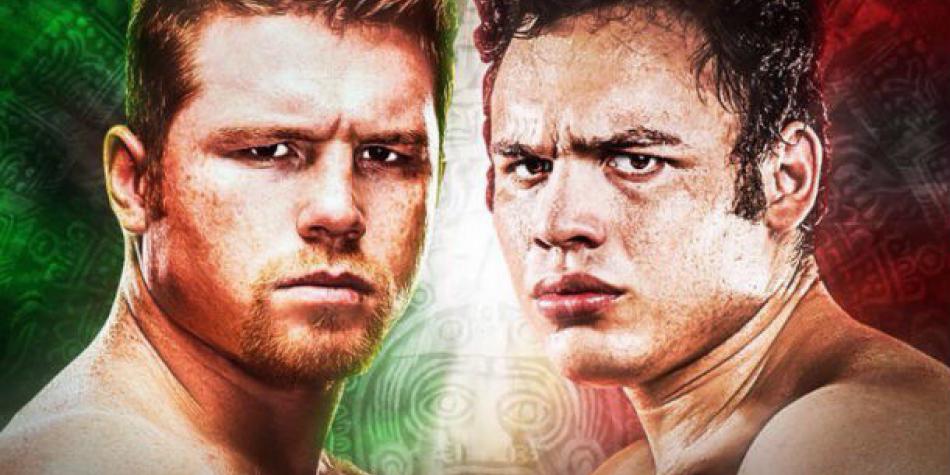
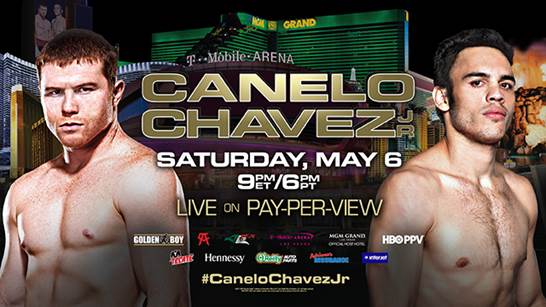

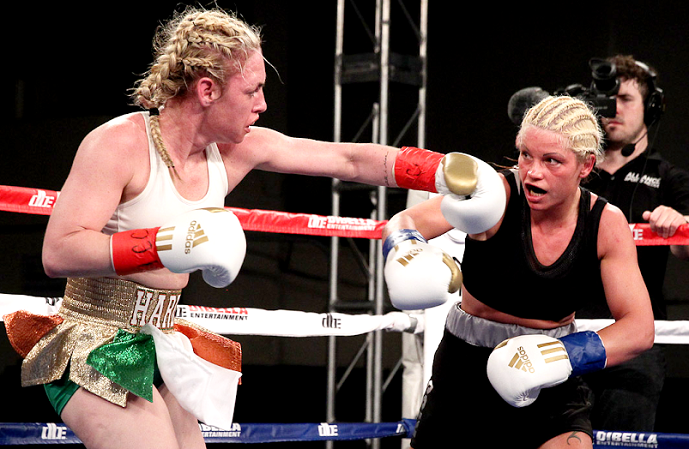
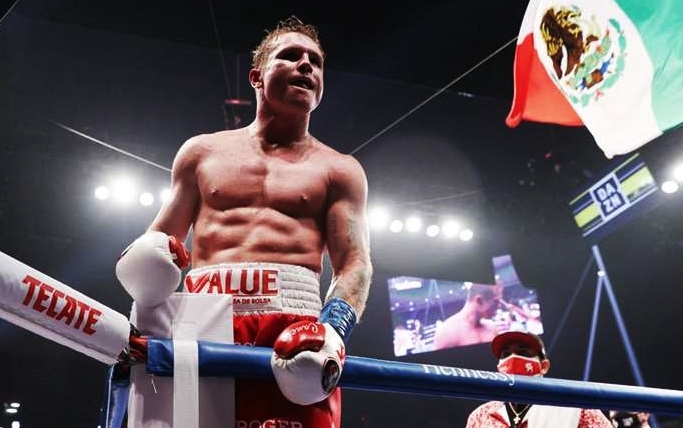
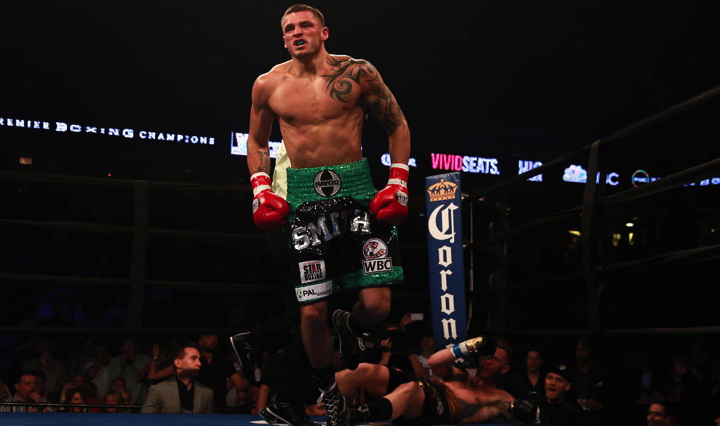
Good article.
I would only submit this one point, which has nothing to do with Alvarez versus Chavez… if Anthony Joshua wear an American, boxing would be back on the map. The fact that there are no US heavyweight champions diminishes the marketability of the sport in the United States. And, the United States is the biggest market for this sort of thing. So the answer is get a US heavy weight on top of his game, boxing once again becomes popular.